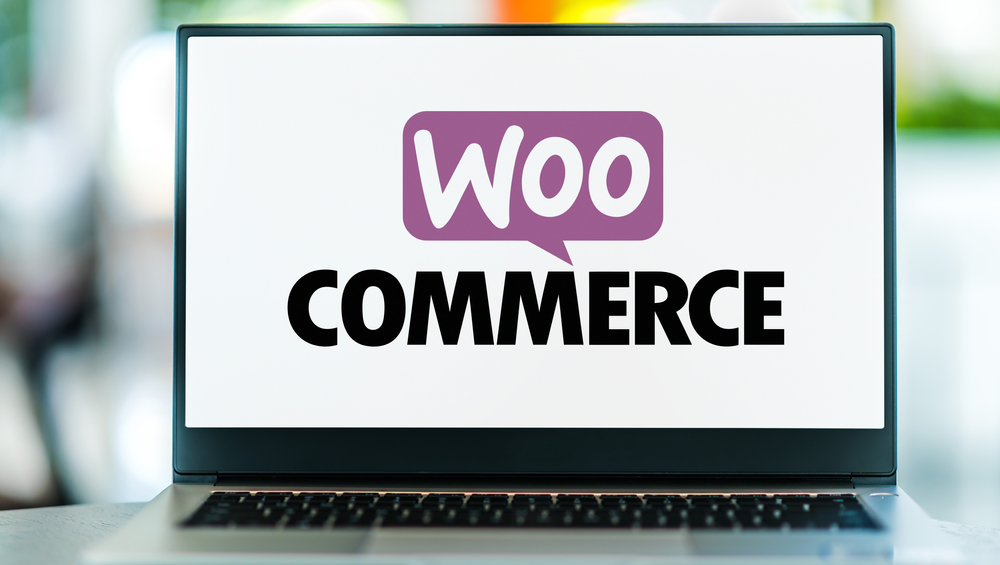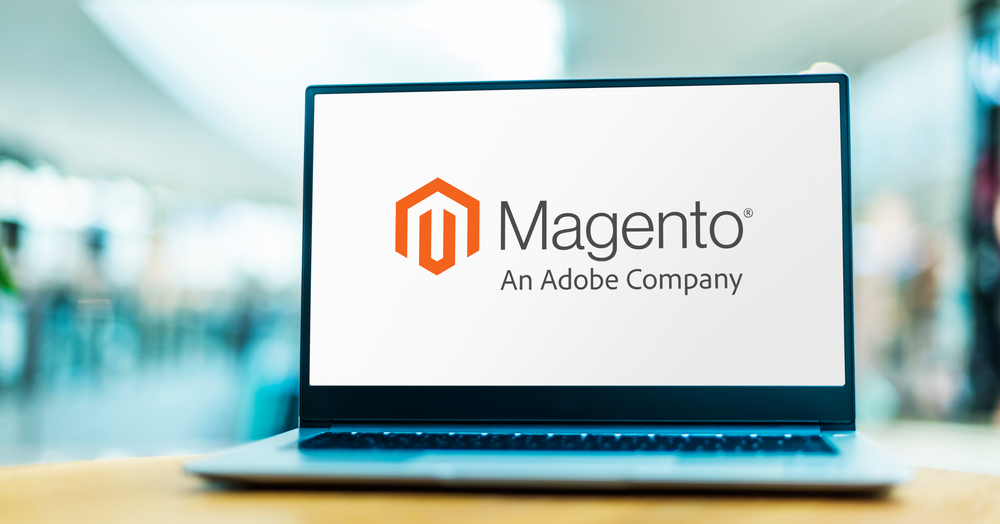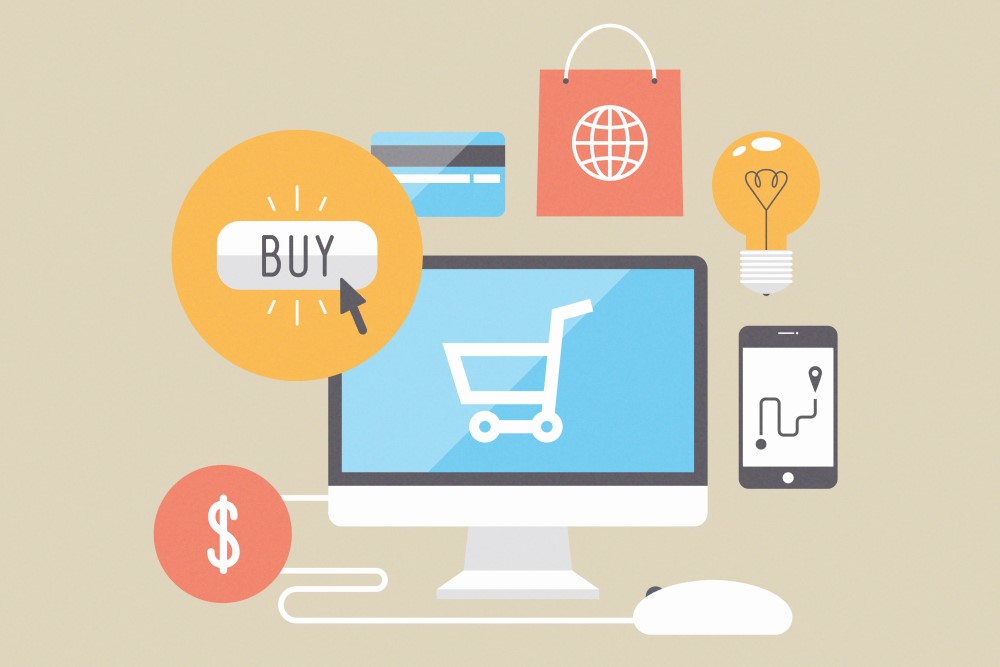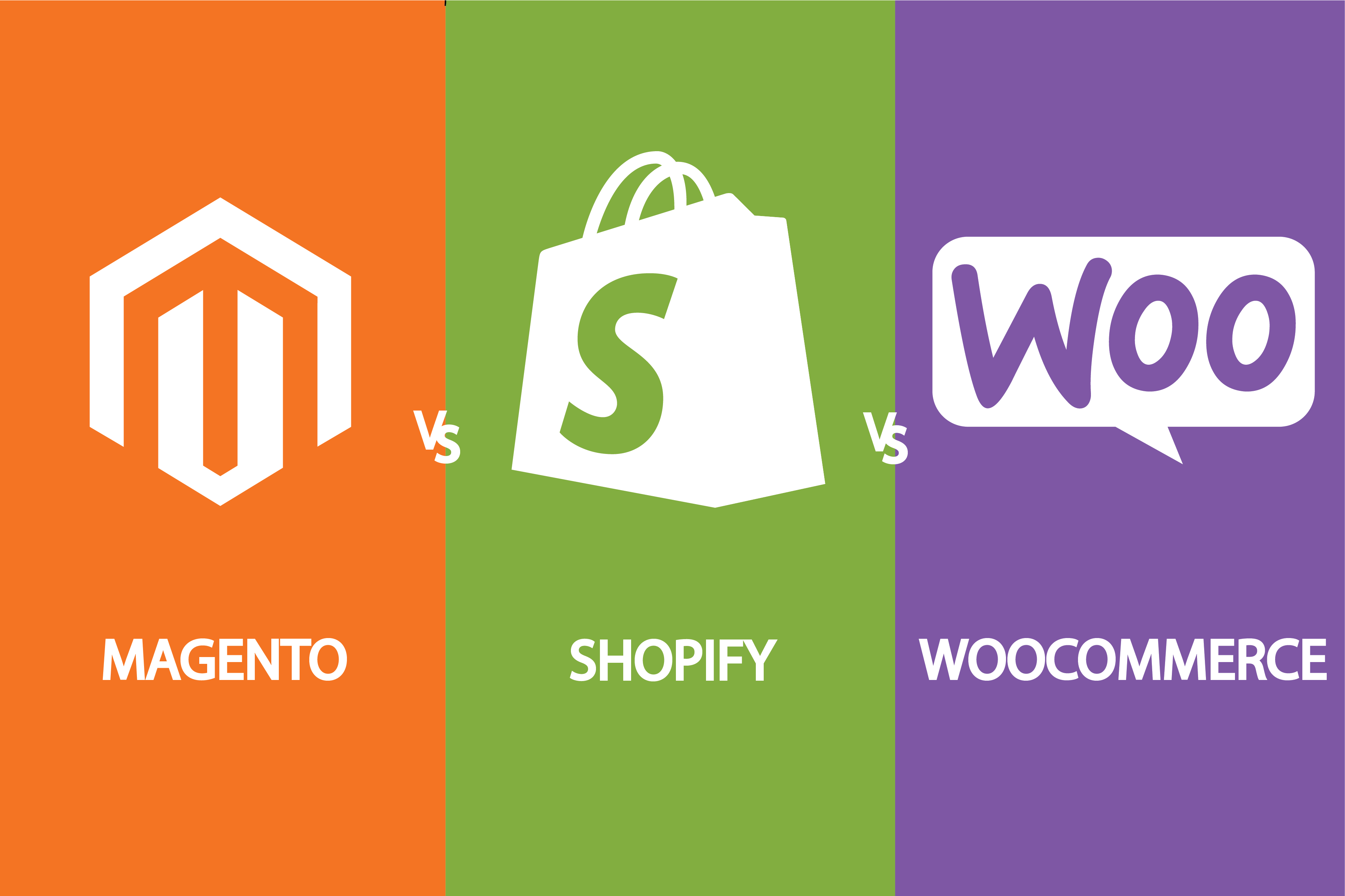Deciding to sell your products online is an easy decision.
Deciding which platform to use as the foundation of your ecommerce business is a lot more difficult than you think.
If you make the wrong decision now by not anticipating where your business will be in a few years, you might spend extra money migrating to a more robust solution down the road.
This guide will help you understand the pros and cons of some of the big players in the space: Shopify, WooCommerce on WordPress, and Magento.
Let’s get started so you can improve your ecommerce marketing journey.
Where does your business fit right now?
If you’re a small local shop, have modest plans for growth, or just need a site to sell a few items, using an ecommerce platform like Shopify can be ideal if you don’t need custom features.
Shopify provides you with a new site and domain to start, and you get basic features like abandoned cart recovery and discount codes.
That being said, for many larger and growing businesses, custom software solutions are a necessity.
If you already have an ERP or CRM system in place, implementing a self-hosted ecommerce platform like Magento is a no-brainer.
Features ecommerce sites should have
When you think about an ecommerce website, there are probably a few big names that come to mind. Amazon is known for dominating the industry, and it’s because of their great user experience. They even created a patent for their 1 click purchase back in 1999.
Of course, your ecommerce website should have all of the features a normal website has, like a great user experience on desktop and mobile devices alike and an SSL certificate. (P.S. you can check out other web trends here). But what features are specific to ecommerce?
Amazing visuals
With online shopping, your customers need to understand what they’re purchasing.
Low resolution or blurry photos don’t allow the customer to envision themselves using the product. It’s the first element that really jumps off the page and is a reason that Google Shopping is so successful.
People want to see what they’re buying.
Authentic customer reviews
People love hearing what others have to say about specific products. They want to know the positives and negatives about the product.
Your reviews should all be user-generated so they are more authentic. This tells the customer that your reviews are not all made up and that you’re not just showing the good reviews and hiding the bad.
Seeing nothing but 5-star reviews can make a product sound too good to be true. Nothing is perfect in this world and your customers understand that.
Most people want to see the good reviews mixed in with the bad. Of course, if there are too many bad reviews, then the warning signs are clear that the product isn’t good.
Bad reviews don’t always sway the customer away from your product, as they can give more insight into why. Also, some people are just always having a bad day and their reviews showcase this, so it’s important to let the customer read these reviews and make the decision for themselves.
Wishlists
Wishlists help people put items into a separate list to purchase later.
If you only have a few products (under 100) then a wishlist probably isn’t essential for you.
Having thousands of products, however, is a different story, especially if your inventory is constantly rotating.
In many instances, you can have wishlists alert your customers when products are back in stock and send them an email when this happens.
Discount codes via pop-ups
Most people who use the internet will tell you that they hate pop-ups and hate websites that use them. But the data will tell you otherwise.
Pop-ups still work and will continue to work as long as they are relevant to the user.
Too many pop-ups will annoy the user.
It’s important to keep this balance in mind and serve pop-ups at the right time and with a message that is enticing enough for a user to give their email away.
Often, this is a discount code on a future purchase.
Related Items
It’s an easy sell when you offer items that make sense with the purchase your customer is about to make.
If they’re buying a phone, they probably need a case and a charger.
Showing these related items on the checkout page, or even right after they have added an item to their cart, is a great way to add that extra revenue by providing valuable items your customer will need.
Use PayPal, ApplePay and other known third parties for checkout
In order to sell more, you need to reduce friction for the purchase. This is why Amazon’s 1 click purchase button is worth billions of dollars.
All online retailers want to reduce the amount that they pay for credit card fees and third parties, but when it makes the difference between more sales and less sales, then the decision becomes easy.
PayPal and ApplePay are two ways that users can check out more simply. If the customer hasn’t heard of you before, they may already be skeptical. Seeing a brand they recognize helps reduce any friction in the buying process.
Hosted vs Self-Hosted: What’s the Big Difference?
Once you’ve mapped out the base features your ecommerce website will need, you’ll want to decide which type of platform you want to build on.
When we create websites, we think about whether they should be hosted or self-hosted before we begin the process.
Keep in mind that your features are never set in stone. There may be additional features you’ll want to consider adding in the future.

Just because you may be okay with having a website with little to no customizable features now doesn’t mean your future growth won’t demand a major upgrade.
Let’s look at what types of ecommerce platforms are available to truly understand what they are.
Hosted
A hosted ecommerce platform, like Shopify, lives and runs on the platform provider’s server.
The user accesses their ecommerce platform through a portal on the host’s website.
The provider’s website allows you to make changes to your website without having access to the coding.
A hosted solution is confined to the restraints of the provider, which can limit some customization.
You can think of a hosted solution as similar to Facebook. You can create a profile and edit its information within the parameters that Facebook allows.
In a similar way, you can create a website using a platform like Shopify and edit your content.
In both scenarios, the website and coding itself are being managed by the host.
When Should You Choose Hosted?
Using hosted solutions like Shopify can be a great choice, especially when you’re working with a very limited budget. They have straightforward pricing with different levels of service packages.
Most hosted solutions provide all the basic necessities for getting your shop running with some popular features.
They are easy to manage, giving the user a web interface to work with rather than lines of code.
With a hosted solution, you’ll never have to worry about editing or updating code as the providing host handles that.
That said, because you have no control over the code, you’re limited to only the features that your host offers.
Shopify, for example, doesn’t let you directly modify the checkout page. You can change the color of the page so it fits with your theme, but many specific elements are not able to be modified.
Shopify does have workarounds for this, such as apps or adding scripts and styles in the settings, but these require more effort than you would expect.
If you do want to modify the checkout page in Shopify and have full control, they recommend you upgrade to Shopify Plus, which costs a minimum of $2,000 a month.
Suddenly, your cheap hosted alternative becomes an enterprise level account.
Unless you’re on this enterprise plan and you are a business that foresees significant future growth, the limitations of a hosted solution may become restricting to you in the future.
If you already find yourself needing to integrate your ecommerce site with an Enterprise Resource Planning (ERP) or Customer Relationship Management (CRM) system, a hosted solution may prevent that.
Because you have no control over the code, you’re limited to only the features that your host offers.
Self-Hosted
A self-hosted platform, like Magento, is run on your own server or a 3rd-party provider you rent from.
Unlike hosted sites that require you to work within their precoded parameters, self-hosting allows you to manage the coding yourself or hire a custom software professional to do so for you.
This allows for unique personalization and customization when it comes to integrating other applications and software.
It’s worth noting that self-hosted options put more on your business and make you responsible for things like making your website ADA compliant while hosted sites have the provider take care of this.
When Should You Choose Self-Hosted?
Open-source ecommerce solutions like Magento are extremely useful for businesses who need additional flexibility when integrating unique applications and features that hosted platforms just don’t provide.
Unlike a hosted platform, you have access to and manage the site’s code, so you’ll need to hire a dedicated software professional.
The main benefit of self-hosted solutions is they allow for more customization with your website’s layout, branding, and integration of custom software features.
As long as you have an internal team or the budget to hire a technology firm to manage it for you, using a self-hosted platform will allow you to create features that fit your exact specifications, like connecting an existing POS, ERP, or CRM system to your site.
Using a self-hosted platform will allow you to create features that fit your exact specifications.
Now that we know the main differences between hosted and self-hosted, let’s look at some of the big players in the arena, starting with Shopify.
Shopify
Shopify is a hosted solution that is often seen as one of the more simple solutions available.
With a ton of themes to choose from and cheap monthly costs, Shopify is a great starting point for many new online stores.
It also has great apps to help you reach your wishlist of features for your store right away or down the line.

If you want to expand into a large enterprise store someday, Shopify also has you covered there.
Some big name Shopify websites include Allbirds, Huel, and Steve Madden.
Let’s look at each of these topics in a little more detail.
Themes
Shopify is often seen as more of an out-of-the-box solution because of the wide selection of themes available.
Rather than needing to know how to code, many themes offer drag and drop interfaces to make updates easy.
Because of the wide use of themes, Shopify can be seen as a cheaper solution. However, if you have a development team, you can certainly create your own themes to match your online store’s brand.
Because Shopify is a hosted solution, there are limitations to what you can customize, even if you have an advanced development team.
To help protect most users from themselves, Shopify base plans limit how much access you have to the underlying code of the website.
This type of enterprise level access provides a higher breadth of functionality and features that you can add to Shopify, but it is just not feasible for most small companies to utilize.
Support
Because Shopify is a hosted solution, you’ll have access to support from their team. Depending on the plan you’re on, you may receive additional support avenues or quicker turnaround times for responses.
With other solutions like Magento or WooCommerce, you’ll have to resort to using forums and hiring developers to find out how to fix anything that may have broken.
Ease of Use
Shopify is very easy to use and you can update content and product information in a snap.
If you have 100 products you upload all at once, you can utilize a spreadsheet upload to do the heavy lifting for you.
As long as you’re able to navigate most CMSs, you’ll find Shopify is just as easy.
However, in the same way you may want to customize your theme, there may be some things you want to accomplish that seem simple, but are more complicated due to the rigidity of the interface.
Tons of Apps
Apps are Shopify’s version of plugins or extensions. These are premade coding solutions that you can add to your online store to expand features.
If you want to add one of the features discussed above, it may be as simple as adding the app to your store and clicking a few buttons.
Most apps are designed to be easy to use with no knowledge of coding required.
Since third-party companies develop apps, you’ll need to request any support from the third party directly. Shopify support will not be able to assist with these types of issues that may arise.
Cheaper Pricing
Shopify has multiple pricing tiers to choose from. The lowest is their Shopify Lite plan for third-party websites at around $10 per month. This option is useful if you already have a website somewhere else, but want to offer ecommerce options through Shopify.
Most online stores can safely start at their base plan of $29 per month. This includes hosting your website, so it’s certainly a bargain.
At any time, you can upgrade to a higher plan and receive some benefits like cheaper credit card fees. If you have a lot of volume, the higher monthly cost will start to make sense as you save in the long run.
The highest tier is Shopify Plus, which starts around $2,000 per month and is only required if you have enterprise level needs. In order to find Shopify Plus more worthwhile, you’ll need an internal development team or a verified Shopify Partner to help manage your website.
This puts the true cost of Shopify Plus much higher than $2,000, but it is certainly a great option for enterprise level online stores.
WooCommerce via WordPress
WooCommerce is a plugin that can be added to WordPress at no additional cost.
WordPress already has a ton of benefits such as a built-in blog, advanced website functionality, and full customization of any page templates.
There is also a huge ecosystem of plugins and a large community online that makes any customization to your website possible.
If you have a store that sells more non-traditional products and these products don’t follow a standard order process, you may need further customization. Bulk ordering or custom pricing based on a membership level are features that you’re more likely to use WooCommerce to accomplish rather than a hosted solution like Shopify.

When it comes to growth, a company that starts off by building their website on WordPress is easily equipped to add additional functionality to their website by way of an ecommerce store.
WordPress is a self-hosted solution, but if you already have a WordPress website, then you shouldn’t have any additional costs.
Unless you expect a ton of increased traffic, you should be okay with your current hosting solution. If this changes, you will be able to easily upgrade your plan depending on who you have selected to host your website.
Some big name WooCommerce websites include Wienerschnitzel, Weber, and Stroopwafels.
Themes
WordPress already offers a seemingly infinite number of themes to purchase.
Storefront is the default theme recommended for WooCommerce, but for a small price, you can upgrade to more premium themes to match your brand.
Support
Because WooCommerce operates under WordPress, you are limited to support via forums and third-party developers who create any plugins you’ve added to your website.
Ease of Use
If you know how to navigate WordPress, you are already at an advantage if you choose WooCommerce.
There are just a few sections added on in the traditional WordPress way via the lefthand menu.
By adding WooCommerce to your WordPress website, you can easily start adding products and generating revenue.
Extensions
WooCommerce has some amazing extensions that can easily enhance your website and also improve your analytics.
Setting up enhanced ecommerce can be tricky if you do it manually, but adding a plugin for enhanced ecommerce reduces this process to just a few clicks.
Pricing
Out of the box, WooCommerce is a free plugin to add your ecommerce functionality.
That being said, there are premium extensions that have one-time or annual pricing.
Magento
Magento is a self-hosted ecommerce solution that is great for enterprise level stores that need more features.
It is also an open-source, community-driven CMS, which means that there are tons of developers around the world contributing to making the system the best it can be.
Some big names that use Magento include Nintendo, Cisco, and Walmart.

Hosting
While hosted solutions like Shopify have all of the hosting needs taken care of by Shopify, you’ll need your own hosting solution separately.
This means that if your website goes down, you won’t be able to contact Magento to get the website back up. You’ll need to contact your hosting provider.
Your online inventory is also capped by your hosting solution. In theory, you can upload unlimited products to your online store, but you may need to have a higher level plan at your host to support these products. A dedicated server may be required if you have a huge amount of products.
Themes
Magento offers a wide range of themes to choose from. Like most popular CMSs, you can install free themes or paid themes.
Some themes come out of the box with specific looks and features that can help your store stand out.
Support
Support is what makes Magento stand out from Shopify and WooCommerce in terms of expense.
In order to have an amazing Magento store, you’ll need amazing developers as well. Most developers out there do not have as much experience in this platform as they do with others.
Like WooCommerce, you can absolutely spend your time in forums to troubleshoot any issues you’re having, but this still requires a ton of experience for yourself or a developer.
Adobe did purchase Magento back in 2018 so you could argue that support is done through Adobe. However, with most larger corporate acquisitions, you may find support is not as responsive or helpful.
Ease of Use
Magento is known to have a larger learning curve, but at the end of the day, it’s still a CMS with an intuitive user interface.
It even has coupon and discount code features built in where Shopify does not. This means you can offer coupons to your customers without the need of an extension.
Extensions
Extensions are Magento’s version of apps or plugins. They add additional features and functionality to your website without the need to have a lot of coding knowledge.
There are many free options, but you’ll most likely find yourself using paid extensions to enhance your functionality.
Like any out-of-the-box solution, extensions have a risk of causing conflicts as two or more extensions may end up rewriting over the same functionality. When this occurs in Magento 2, you have more protections in place to prevent your website from encountering a critical error.
Pricing
Magento was purchased by Adobe and now offers an enterprise edition that can cost upwards of $20,000 to over $100,000 per year for licensing.
Magento also has two major versions: Magento 1 and Magento 2. Magento 2 came out in 2015 and boasts quicker load times, better SEO performance, and more updated PHP.
When it comes to keeping your website secure, you’ll absolutely want to make sure you have the latest PHP version. This makes Magento 2 a must, which adds additional costs.
So…which should you go with?
We’ve taken time to discuss how Shopify, WooCommerce, and Magento can be beneficial for your organization, but which should you go with?

Speaking generally:
- Shopify is a great choice if you’re a local shop and just starting out. It’s easy to set up and functionality can be expanded upon with apps. However, custom development can be more expensive if you can’t find a pre-made app.
- WooCommerce would be the best choice if you already use WordPress and you have a unique or custom store. An online store that needs more robust pages and more advanced functionality and features would benefit from WooCommerce. This is cheaper to maintain than a more custom solution.
- Magento is the best choice if you want to add more custom features, include integrations with your POS, ERP, & CRM systems, and have a software developer to help
All three have the capabilities of supporting small or enterprise level businesses, but it’s clear that Shopify is geared towards start-ups, WooCommerce for small to mid-sized businesses, and Magento for Enterprise.
Whatever you end up deciding, just think about your business goals and where you want your business to go.
The most important thing about this decision you make today is that the platform you choose aligns with your business’ unique needs.


